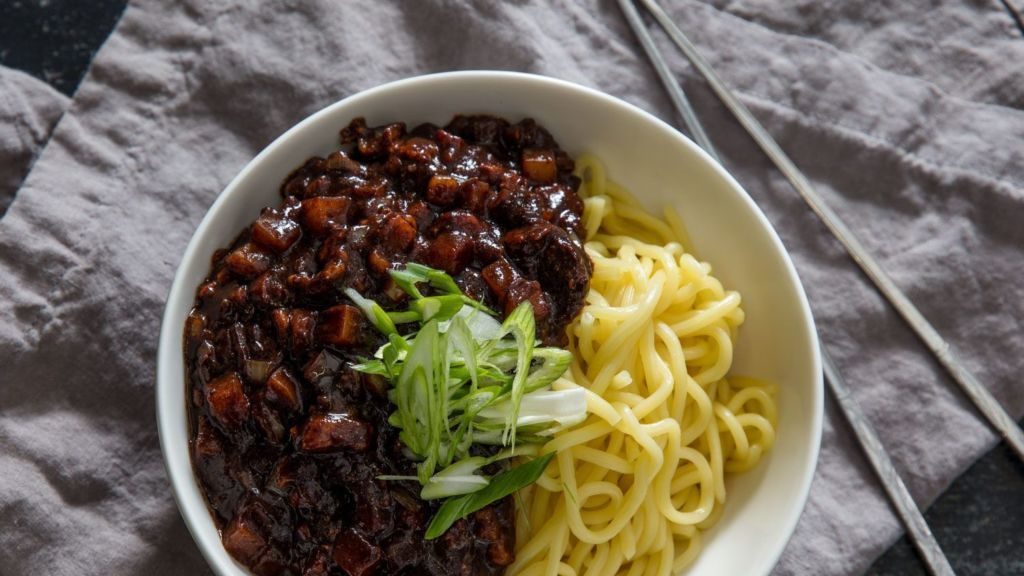Those who are not familiar with jajangmyeon might have a puzzled look on their face upon seeing this dish being served for the first time. The thick black sauce served with noodles seems to simple a meal, but in fact, the noodles are packed with rich flavours.
What is Jajangmyeon?
Jajangmyeon is a rustic Korean dish made with Chinese noodles topped with a sticky black sauce. The sauce of this noodle is typically made up of diced pork, vegetables and chunjang (Korean black bean paste). For those of you who are not familiar with Korean ingredients, chunjang is a sweet black bean paste often used in Korean cooking. It is inspired by Chinese cuisine and ingredients, and it is responsible for the colour of jajangmyeon. It is usually fried in a pan. For those who are not into pork, jajangmyeon can also be made using a variety of seafood.
History of Jajangmyeon
Jajangmyeon was first served in a Chinese restaurant ran by Chinese immigrants in the Chinatown area of Incheon, Korea. It was first served in 1905, and the dish combined Chinese ingredients with Korean cooking. The restaurant named Gonghwachun is now the Jajangmyeon museum.
Jajangmyeon is believed to have been inspired by the Chinese dish Zhajiangmian – the Chinese noodles with soybean paste. However, while the Chinese recipe uses fermented soybean, Jajangmyeon uses the black soybean paste instead.
Back in the day, jajangmyeon is said to be a dish that can only be afforded by the wealthy. Thus, commoners only get to enjoy the dish during celebrations or special occasions. However, during the Korean War in the mid-1950s, the price of jajangmyeon dropped and made it affordable for all Koreans. Since then, the dish grew so popular that it has spread all over the globe and became a standard dish in Korean restaurants in the world.
Variations of Jajangmyeon
The traditional Jajangmyeon is made with pork pieces and a dry, gooey sauce. Besides the original recipe, there are three other ways of making jajangmyeon. Jaengban-jjajang is made by stir-frying noodles with sauce in a wok and then serving it on a plate. Meanwhile, the Yuni-jjajang is made with minced meat. Fun fact, the name Yuni comes from the Chinese word Rou Ni which when directly translated means minced beef meat. Lastly, the Samseon-jjajang is a Jajjangmyun variation that is made by replacing the meat with seafood such as mussels and squid.
Where to get Jajangmyeon in KL
If you love noodles and unique flavours, you should definitely try a bowl of jajangmyeon. Make your way to Milk Moustache Café in Kajang for their bowl of jajangmyeon at only RM16.90. Instead of using pork, this café uses chicken, so you don’t have to worry about it being halal.
Otherwise, you can also head to Myeongdong Topokki in One Utama for their fancy jajangmyeon set that also comes with kimchi and side dishes. Don’t feel like going out? Have jajangmyeon delivered to you via the foodpanda app!
